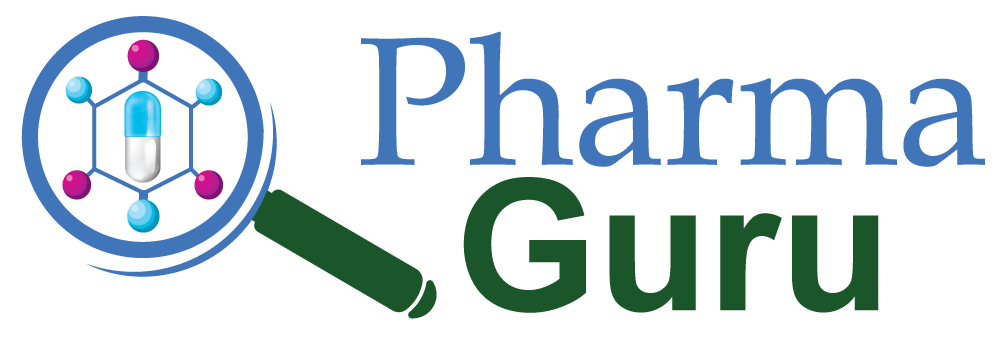
Our pharma training Programs for corporate teams set the standard in the industry. We provide customised corporate training solutions specifically designed for the pharmaceutical industry, supported by a flexible and value-driven discount structure. Share your team’s requirements with us, and we’ll deliver a tailored proposal that meets your objectives and maximises value.
Select from our curated list of training programs—or let us know your specific needs, and we’ll design a solution just for you.
9+ Best Pharma Training Programs for Corporate Teams
Choose the training programs that best suit your team’s needs from the list below, and let us know your preferences. At PharmaGuru, we are committed to delivering the highest quality training and support — ensuring the best service in the industry.
- QBD In Analytical Method Validation: Pharma Training Programs for Corporate
- How To Handle Chiral Complexities in APIs using QBD?
- QBD Approach In HPLC Method Development: Pharma Training Programs for Corporate
- Analytical Control in APIs (active Pharmaceutical Development)
- QBD Approach in Control of Pharmaceutical Impurities
- Stability Study and self life evaluation
- How to Reduce Pharmaceutical Analysis Cost
- How to Avoid/Handle Deficiency Letters?
- How to Handle OOS and OOT in Pharmaceuticals?
- GLP (Good Laboratory Practices) in Pharmaceutical Development
Corporate Training Program Pricing – PharmaGuru
PharmaGuru offers high-impact corporate training programs tailored for the pharmaceutical industry. Our group pricing model ensures value and flexibility for organisations of all sizes. Below is the standard pricing structure for each course, suitable for up to 10 participants.
Pricing Table
| Course Title | Price (Up to 10 Participants) |
|---|---|
| QbD in Analytical Method Validation | ₹35,000 |
| Handling Chiral Complexities using QbD | ₹35,000 |
| QbD Approach in HPLC Method Development | ₹35,000 |
| Analytical Control in APIs | ₹35,000 |
| QbD in Control of Pharmaceutical Impurities | ₹35,000 |
| How to Avoid/Handle Deficiency Letters | ₹35,000 |
| How to Reduce Pharmaceutical Analysis Cost | ₹35,000 |
| Stability Study and Shelf-life Evaluation | ₹35,000 |
| Handling OOS and OOT in Pharmaceuticals | ₹35,000 |
| GLP in Pharmaceutical Development | ₹35,000 |
Customize Your Learning Experience
| Add-On Options | Notes |
|---|---|
| 🔹 In-Person Delivery: +₹10,000 to ₹20,000 🔹 Customized Case Studies: +₹5,000 🔹 Post-Training Certification: +₹3,000 to ₹5,000 🔹 Extended Duration (2+ Days): +₹35,000 per day | 🔹All programs include digital training materials 🔹Certificate of Participation for each attendee 🔹Ideal for QA/QC, R&D, Regulatory, and Manufacturing teams |
Ready to Train Your Team?
Get in touch with us for scheduling, customization, or bundled pricing for multiple programs:
Request a Quote
Explore a concise summary of the essential takeaways from each of our specialized training programs — carefully crafted to align with industry best practices and global regulatory standards.
1. QBD In Analytical Method Validation
Key Learnings
- Defining the Analytical Target Profile (ATP) & Critical Quality Attributes (CQAs) to link method performance to what is required for safety, efficacy, and compliance.
- Use of risk assessment tools to identify critical method parameters (CMPs) / variables that significantly affect method performance.
- Design of Experiments (DoE) to explore method parameter space, understand interactions, optimize across multiple variables rather than one at a time.
- Establishing Method Operable Design Region (MODR) or design space, so that small changes in method parameters still yield acceptable performance.
- Lifecycle management: ongoing verification of method performance, dealing with drift, ensuring robustness over time, method transfer, revalidation when required.
2. QBD Approach In HPLC Method Development
Key Learnings
- efining performance requirements (e.g. resolution, sensitivity, specificity, sample throughput) via ATP.
- Risk assessment to identify which HPLC parameters (mobile phase composition, pH, flow rate, column temperature, gradient vs isocratic etc.) are critical.
- Use of DoE / factorial experiments to explore parameter interactions and optimize method.
- Establishing robustness & design space / MODR such that the method is tolerant to small variations without failing.
- Validation of the optimized method (linearity, accuracy, precision, LOD/LOQ, specificity, etc.) plus establishing a control strategy / monitoring plan for ongoing performance.
3. Analytical Control in APIs (Active Pharmaceutical Ingredient Development)
Key Learnings
- Defining what needs to be controlled: identity, purity, potency, impurities (known & unknown), enantiomeric purity (if applicable), stability.
- Developing appropriate analytical methods for each control point, validated and robust.
- Risk‑based setting of specifications: what limits, what acceptance criteria, based on data, safety, potency, regulatory expectations.
- Ensuring traceability and documentation: raw materials, intermediates, final API; auditing methods; sample stability; data integrity.
- Continual monitoring: stability, batch‑to‑batch variation, trends; establishing in‑process controls; whenever process or source changes, re‑evaluating control.
4. How To Handle Chiral Complexities in APIs using QBD

Keay Learnings
- Understanding stereochemistry: recognizing when APIs are chiral (multiple stereocenters, enantiomers, diastereomers) and their impact on pharmacodynamics, pharmacokinetics, safety.
- Strategies for separation / resolution: choice of chiral stationary phases, chiral selectors, enantiomeric enrichment (synthesis or separation), use of chromatography, HPLC‑CSP etc.
- Applying QBD tools to chiral method development: define chiral CQAs (e.g. enantiomeric purity, resolution, tailing), CMPs (temperature, mobile phase, pH), DoE to optimize separation and resolution.
- Regulatory and control strategy for chiral impurities: setting specification limits, detecting minor enantiomer, monitoring, validation, ensuring compliance
5. QBD Approach in Control of Pharmaceutical Impurities
- Control strategy: monitoring during manufacturing and storage, specification / in‑process control, stability studies, knowing when to take corrective actions.sures data integrity, product quality, and regulatory adherence.
- Classification of impurities: known vs unknown; genotoxic, mutagenic, degradation products; stereoisomeric impurities.
- Risk assessment to identify which impurities are critical (e.g. toxicity, amount, potential exposure).
- Analytical methods for impurity detection and quantitation: sensitivity (LOD/LOQ), specificity, resolution from main drug peaks; method validation.
- Defining acceptable impurity limits; justification based on safety data, ICH guidelines, trend analysis…….
6. How to Avoid / Handle Deficiency Letters (from Regulatory Agencies)
- Good communication & timely response: when deficiency letters arrive, respond specifically, clearly, with corrective action plans, timelines, evidence.rove product quality, regulatory readiness, and continuous improvement across operations.
- Prior and thorough document review: ensuring accuracy, completeness, no typographical / structural / calculation errors in submissions.
- Understanding regulatory expectations and guidelines (ICH, regional) especially for impurities, analytical data, characterisation etc., so specifications are rational.
- Maintaining a deficiency letters database or lessons‑learned system: learn from what others have had, avoid repeating mistakes.
- Ensure all test methods, analytical procedures, validations are robust, documented, and justification is provided especially for specification limits, impurity thresholds…….
7. How to Reduce Pharmaceutical Analysis Cost?
- Use of QBD / DoE up front to optimize methods so that they are robust, fast, minimal solvent / reagent consumption, minimal re‑runs.
- Selecting methods / instrumentation that balance sensitivity with cost: maybe using simpler detectors, alternative techniques if sufficient.
- Reducing sample preparation steps, automating or simplifying them, pooling where feasible.
- Lifecycle approach: revalidating only when needed; monitoring method drift to avoid waste; method transfer efficiencies.
- Economies of scale: batch testing, reuse of validated methods across similar products, standardization of methods, sharing controls etc.
8. Stability Study and Shelf Life Evaluation
- Designing stability protocols as per ICH guidelines (conditions: temperature, humidity, light etc.), selecting relevant time‑points.
- Identifying degradation pathways, critical stability factors, and monitoring both API and impurities/degradation products.
- Setting shelf life based on real data: extrapolation only when justified, using statistical tools; considering storage conditions (packaging, etc.).
- Analytical method suitability: validated stability indicating methods, ability to detect degradation products, potency loss.
- Monitoring in real time and accelerated conditions; stability commitment post approval; re‑assessment when any change (formulation, process, packaging, storage).
9. How to Handle OOS (Out of Specification) and OOT (Out of Trend) in Pharmaceuticals
- Clear definitions and SOPs for what constitutes OOS vs OOT; distinction is crucial.
- Investigation processes: immediate containment, root cause analysis, trending, corrective & preventive actions.
- Data integrity and documentation: ensuring sample handling, analyst procedures, instrument functionality etc. are sound.
- Use of statistical tools/trend analysis to distinguish between lab error, method drift, material issue.
- Preventive measures: robust method, routine monitoring, control strategy, calibration and maintenance, training.
10. GLP (Good Laboratory Practices) in Pharmaceutical Development
- Understanding GLP principles: organization, personnel, SOPs, material controls, equipment, reagents, calibration, traceability.
- Ensuring documented and validated methods, instruments, proper sample handling, chain of custody.
- Quality assurance / GLP compliance: internal audits, record keeping, archiving, report integrity.
- Safety, environment, ethical practices (animal studies if any), responsibilities.
- Dealing with non‑compliance: reporting, corrective actions, preventing recurrence.
